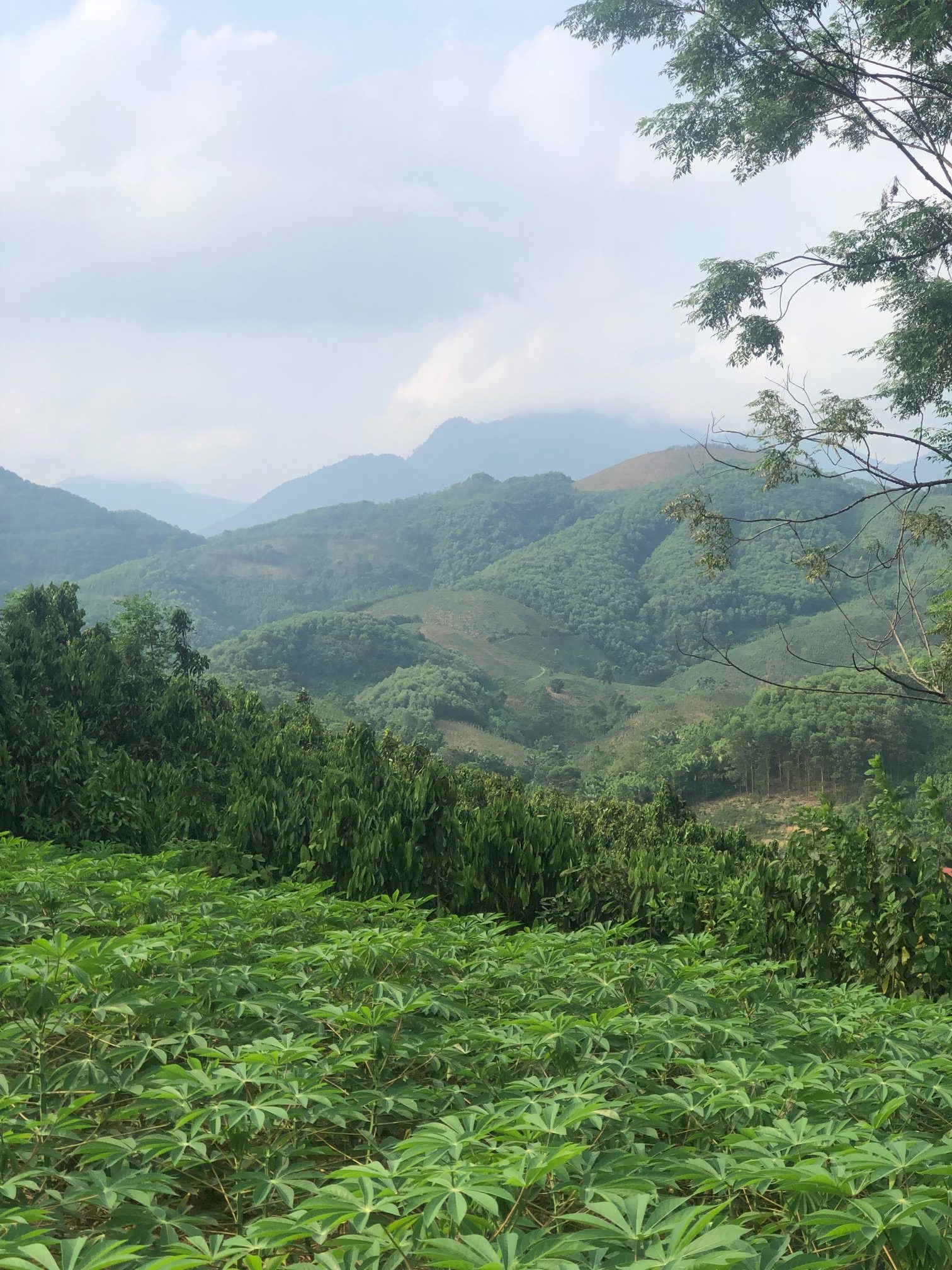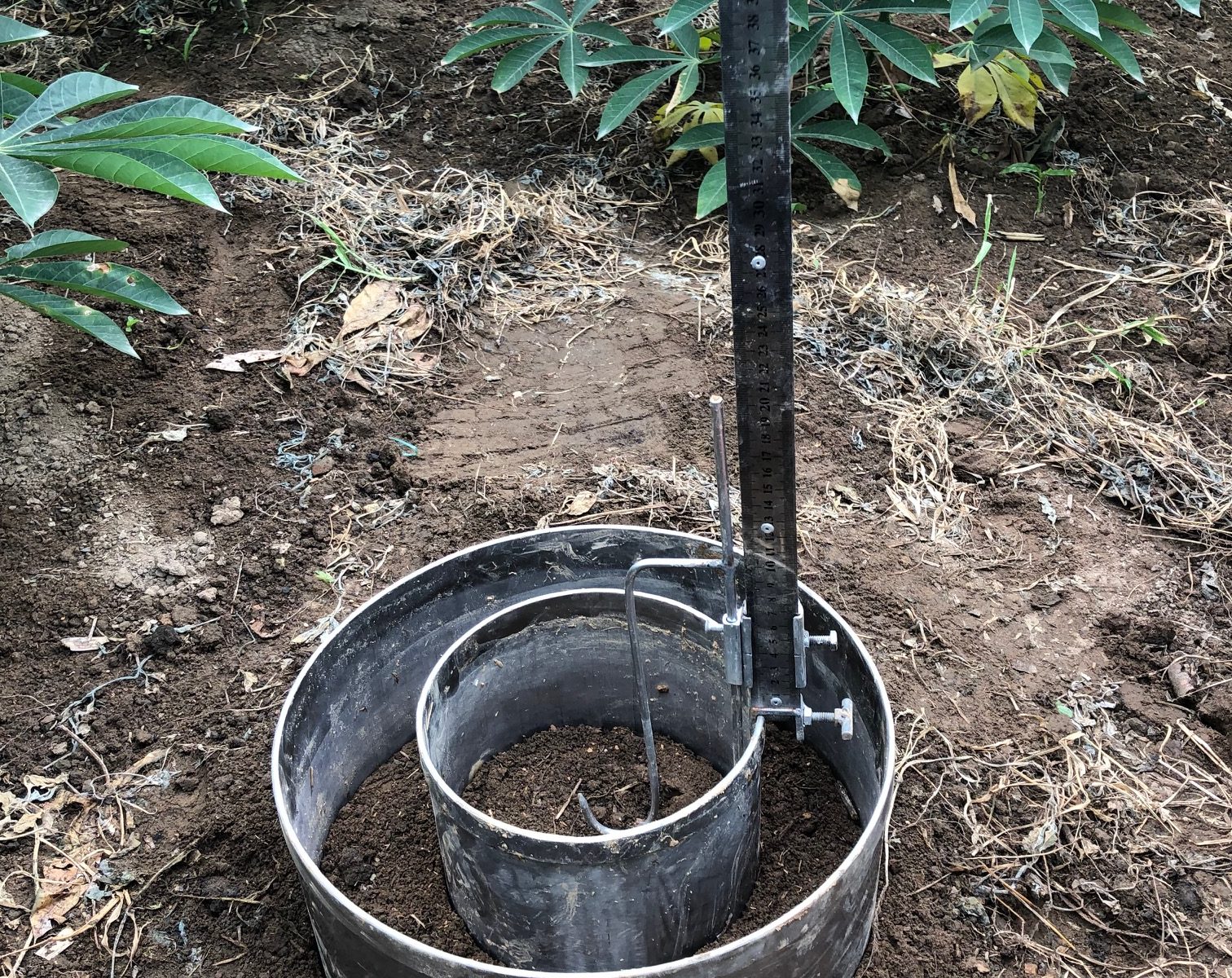This post is a little more personal and not so much related to my research but related to our MScCCAFS as whole. During my time in the field I eat lunch and dinner in a local farmers house with his family and my lab is set up in the back of his house. It is here where I feel most at home. The farmer and his wife have 5 adult children who all live close by and their 9 grandchildren are always coming and going similar to my family, especially my younger cousins at home. I feel like they have accepted me into their family and they include me in everything despite the language barrier. Every day around 11am I finish my first round in the field and I return to their house where I am welcomed with the fruit of the day. The farmers wife puts a plate down in front of me and tells me in Vietnamese what is is. So far I have had dứa (pineapple), xoài (mango), vải thiều (lychee) đu đủ (paypaya) and so many other exotic fruits I don’t even know the English for. My breakfast each morning is a chuối (banana) that I pick off a tree in their garden and I can snack on whatever I can climb up to reach. Their love and appreciation of fruit is something to be admired, everything is eaten there is no such thing as ”ugly fruit” it’s fresh and picked before the birds or ants have a chance to get to them. There is no use of pesticides, herbicides or even fertilizers on the trees here.
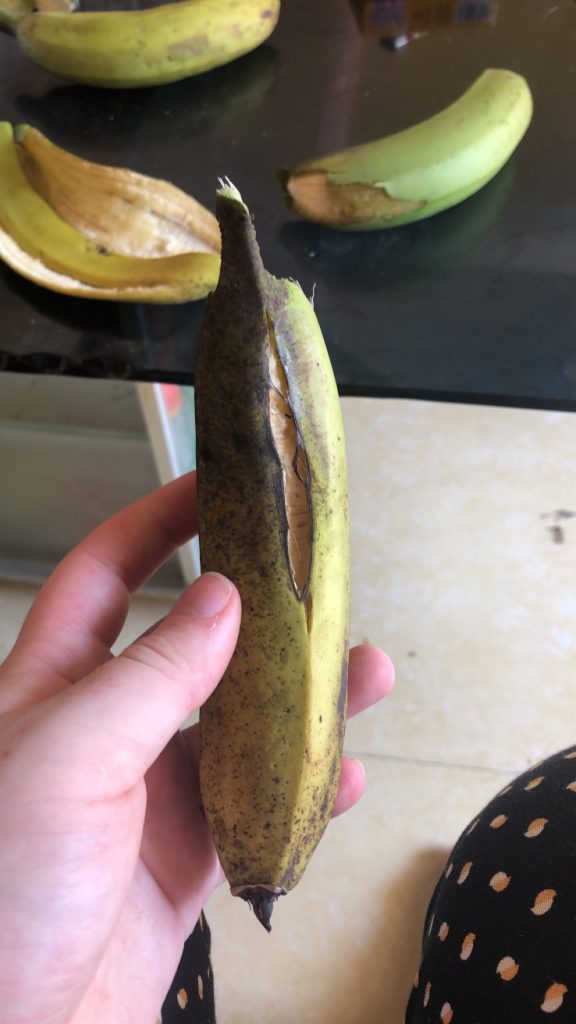
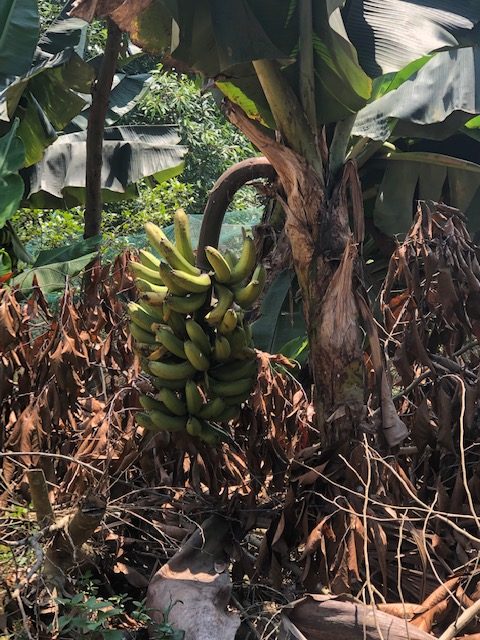
I didn’t grow up on a farm so I have no real experience of farm life but spending so much time here has really opened my eyes to all the work and effort that goes into food. I have witnessed my first slaughter, and many others after that but I have also seen the love and care that goes into the livestock, the chickens are so ”free range” that I have no idea how they decipher which ones belongs to them or their neighbours. Every time a fish is caught or a chicken is slaughtered you can hear them say thank you. I don’t know if they are thanking the animals or some divinity but it for sure makes me stop and think for a minute. At dinner you can have anything from liver to lung and kidney to heart as well as chicken feet as nothing goes to waste, they place equal value on all cuts of meat and all types of animals. This again reminds me of how far removed we are from our food in the western world.
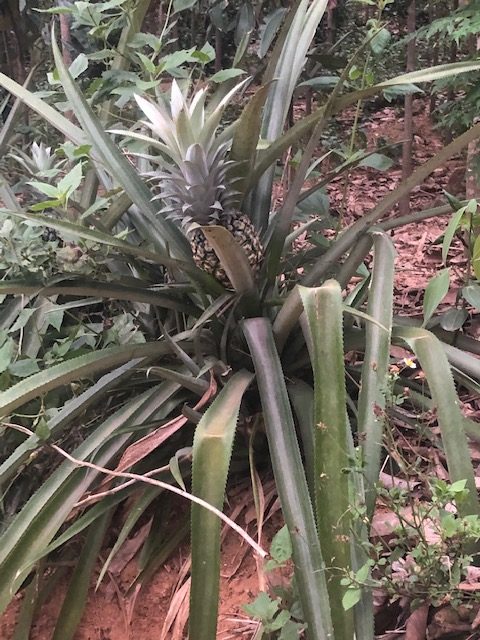
They are currently in the middle of a rice harvest and I can see the farmers in the surrounding fields cutting everything by hand, the following day you see the buffalo in the fields eating whatever was left behind as they clear the field for planting again. When the grains are separated from the main stalk they are laid out on the ground every morning to dry and then packed up every evening in case of rain. This is repeated for 5-7 days. When the rice is laid out to dry is it turned every hour by foot, one of my favorite jobs to do as it feels like warm sand on my feet. Every evening when I help pack up the rice I cant help but think how we don’t appreciate our food enough. We can go to our local supermarket and buy a kilo of rice for as little as €1.50 and never really appreciate or understand all the work that went in to producing that kilo.
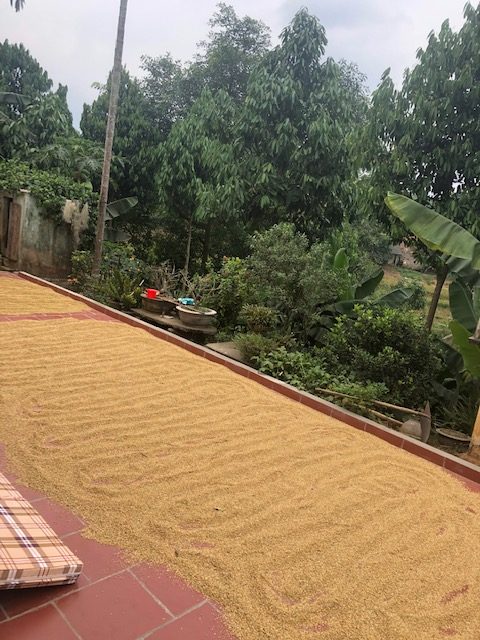
So where am I going with this? Well during my masters I have learned a lot about food security and also food waste. I think that food is such a cultural thing in the west and is associated with every occasion but that there is definitely a disassociation about not only where our food comes from but the time and effort that went into producing it. Food is a lot less of a luxury and a lot more of a necessity here and their love of food is entirely different to ours. Our global population expected to rise to 10 billion people by 2050, that’s a lot of mouths to feed and could become increasingly difficult to do so due to food security problems associated with climate change, drought, and land use change. Spending time here I cant help but think that we can be so greedy about our food. We want the juiciest fruit, the crunchiest veg the most prime cuts of meet. Our need for aesthetically pleasing fruit and veg leads to not only ”ugly foods” being discarded causing food waste but an increase in fertilizers and pesticides which can also have an effect on climate change. Our need to eat meet with every meal has led to deforestation, not to mention the land use change that is needed to grow the crops to feed the animals we eat. I think the western world needs to take a step back and learn to appreciate food again, realize how much food is wasted and how we consume too much of it. Even with a population of 95 million people the Vietnamese still have such a passion and appreciation for their food, how it is produced and where it comes from and there is lessons to be learned in that.

